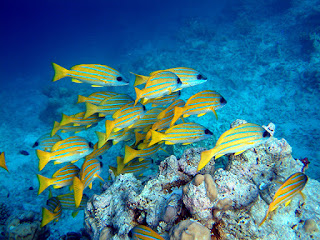Saturday, September 15th was the 9th Annual Reef Alliance Day, held in conjunction with Ocean Conservancy's International Coastal Cleanup. Volunteers from all over the world came together for a unified cause: cleaning up our oceans, beaches, reefs and waterways.
 |
| Overseeing the Cleanup |
Last year, Ocean Conservancy reported that 500,000 volunteers cleaned nearly 15,000 miles of land and waterways and removed more than 18 million pounds of trash and debris. The top 5 most collected items included: cigarette butts, plastic beverage bottles, plastic bottle caps, food wrappers and plastic grocery bags. And, would you believe that 56 toilets, 8 microwaves, 2 typewriters and 1 piano were also removed?!
This year, volunteers from Sub Sea Systems' office cleaned up Jenkinson Lake, a water reservoir in Northern California. The last time a Reef Alliance cleanup was held here was in 2015. That year, 24 volunteers cleaned up over 100 lbs. of trash, filling 6 large bags.
 |
| 2015 Cleanup Crew |
We’re pleased to report that the trash and debris were significantly less this time around, compared to the previous cleanup. 11 volunteers (and a couple of feathered "directors") collected 4 bags of trash, weighing approximately 60 lbs. The top items recovered, and those of greatest concern, included cigarette butts, glass pieces (from broken glass beverage bottles), and food wrappers. Overall, the lake’s shoreline was very clean and well-respected by its visitors.
 |
| Keenan and Tasha Recording Their "Finds" |
Although we’d like to collect as much trash and debris as possible to feel like we had a successful cleanup, it’s always rewarding to see a popular waterway cleaner than it was in previous years!
A number of Sea TREK operators also hosted their own cleanup events this month. In the coming weeks we will select one of those operators as the annual Reef Alliance Award winner, granted in recognition of exceptional conservation efforts. Stay tuned!
 |
| A Successful Day! |


















